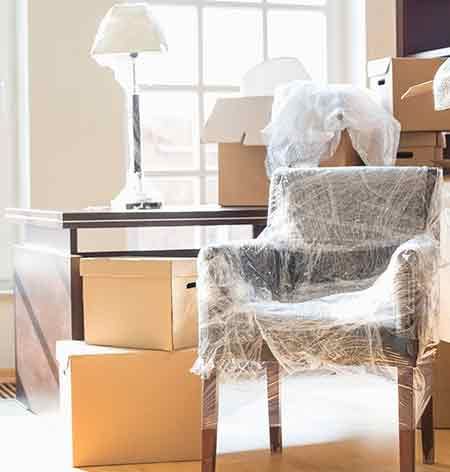Packing and moving furniture such as beds, sofas, tables, or china cabinets could be difficult especially if you plan to move yourself. As these items are delicate, heavy, large, as well as easily damaged, they need to be properly protected during the move to ensure their good condition upon arrival.
Follow the tips below on how to protect furniture when moving, to ensure your fixture is safe and secure during transit.
Make a list
The first step in packing furniture for a move is to create a list of each piece you will be taking. Doing this will help you figure out what specific packing materials you need and how much to get.
Additionally, making a list in advance allows you to determine how much time you will need to spend packing and wrapping your furniture and how much help you will need to lift the pieces into the moving truck.
Gather the necessary packing materials
Once you know which items you are taking to your new home, gather all the furniture moving supplies that you will need to pack your belongings. You are likely to need several, if not all, of the following items:
- Bubble wrap
- Plastic stretch wrap
- Corrugated cardboard sheets
- Resealable plastic bags
- Furniture blankets
- Sofa and mattress covers
- Packing tape
- Old blankets or towels
- Permanent marker
Prepare furniture for packing
Probably you don't want to pack and move with dusty furniture to your new home as the dust and dirt can scratch hard surfaces of the fixtures during the moving process. So, before you start packing, clean and dust off your furniture.
TIP: Use white vinegar, water and natural soap solution for cleaning the surface of furniture
Disassemble the furniture correctly
Whenever possible, disassemble your furniture completely. This will make your furniture easier to move and will help preventing potential damage caused by door frames and walls. Here are some noteworthy tips on how to disassemble the furniture correctly.
- Remove any items you have stored in dressers, china cabinets, or armoires.
- Disassemble any pieces that can be taken apart, such as legs from tables and chairs, bed frames from the bed, take apart wooden or glass tabletops, remove glass doors, drawers and shelves from cabinets.
- Be sure to follow any manuals in order to dismantle the furniture properly.
- When disassembling furniture, it's natural to forget about nuts, bolts and other screws. So, make sure to use one plastic bag to keep all the screws together. Tape the bag securely with packing tape and attach them to the main pieces or place them in the boxes with the appropriate parts.
- If your piece of furniture has lots of pieces, use a same color permanent marker to make a note where each item goes. This way you can protect your furniture during the move.
Wrap furniture
Any disassembled parts should then be wrapped with the appropriate materials and stored in boxes. Boxes should be clearly labeled so you can easily find them when you are ready to reassemble your furniture in your new home. Here are some important tips on how to wrap furniture for a move:
TIP: Whichever materials you use, remember to use plenty of tape or string to ensure that they won't slip off and expose your furniture.
Load the furniture onto the truck
Now that your furniture is properly disassembled and wrapped, you can begin loading your pieces onto the truck. But how you'll move furniture especially when you are planning to move everything by yourself. Here are some things to keep in mind when moving heavy furniture by yourself:

- Use a dolly: When you are moving large and heavy furniture like pool table, heavy chairs, use a dolly to help you bring it out to the truck. This will help you to avoid damage to your large items and prevent personal injuries.
- Use ropes: Upholstered furniture needs extra care. Use rope to secure the pieces to the hooks or paneling on the inside of the truck to secure your furniture.
- Use place gliders, furniture sliders or any piece of cardboard underneath the legs of the furniture. This will prevent your floors and your furniture parts from any scratching while they are moving.
- Keep the doors open throughout the move. This will protect your furniture from hitting walls and doors make it easier to move.
- When loading mattresses, place them upright to free up extra room in the truck.
- Try to keep the truck properly balanced by placing objects of similar weights on opposite sides of the truck.
Of course, there is no way to guarantee that your furniture will arrive at your home in perfect condition. By properly wrapping and packing them, you can at least prevent any unnecessary damage. Doing so will help ensure the safety and good condition of your furniture during the move. If you decide to keep your items for long-term storage, read our guide packing belongings for long-term storage to get more information.